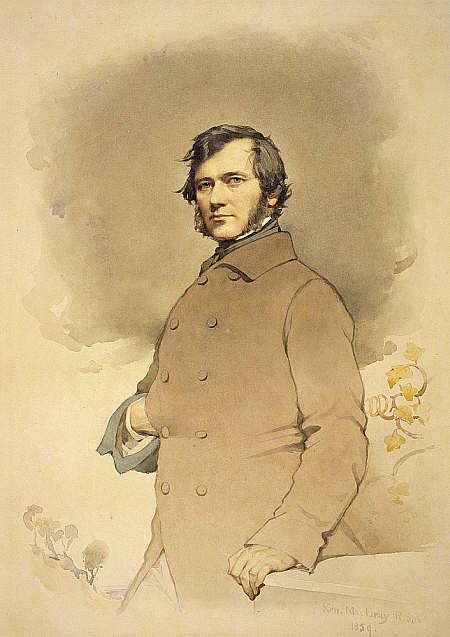Nationality Scottish Occupation Sculptor | Name Patric Park | |
 | ||
Died 16 August 1855(1855-08-16) (aged 44)Warrington, England | ||
Patric Park (born 12 February 1811, Glasgow; died 16 August 1855, Warrington) was a Scottish sculptor.
Contents
Life
He was the son of Matthew Park, a mason from a long line of masons, in Glasgow. At age 14, he was apprenticed to Edinburgh mason John Cornell. With Cornell, when aged only 16, Park was entrusted to carve the family coat of arms over the entrance of Hamilton Palace. From 1828 he worked with the architect James Gillespie Graham. Here he worked on Murthly Castle, which is mainly now demolished, but a chapel containing his work still survives.
From 1831–1833 he studied in Rome under Bertel Thorvaldsen. He was regarded as one of Scotland's finest portrait sculptors. His subjects included the miniaturist Kenneth Macleay (1802–78), who in turn made a posthumous portrait of Park, from a photograph, shown above.
He was elected an Associate of the Royal Scottish Academy in 1849, becoming a Fellow in 1851. He exhibited in the Royal Scottish Academy 1839-1855 and at the Royal Academy from 1832-1855. He also exhibited in the British Institution 1837-1854.
In 1841 he moved from London to Edinburgh, and in 1852 moved to Manchester.
He died suddenly at Warrington Railway Station, when he ruptured a blood vessel helping a porter with a heavy trunk.
Work
Two of his busts, depicting Admiral Thomas Cochrane, 10th Earl of Dundonald, and Sir James Young Simpson, discoverer of chloroform, are in the Scottish National Portrait Gallery. His 1838 seated marble figure of Charles Tennant of St Rollox is on Tennant's tomb at the Glasgow Necropolis. His 1845 bust of Robert Burns is in the Robert Burns Birthplace Museum and his bust of Napoleon III, purchased from the Paris International Exhibition of 1855, is in the Victoria and Albert Museum.
In 1839 he submitted a "fearsome design" as a memorial to Horatio Nelson of Nelson's dead body being carried by two heroic figures. The design was not accepted. A later figure (1846), "Modesty Unveiled", was refused by the Royal Academy due to its inappropriate content.
